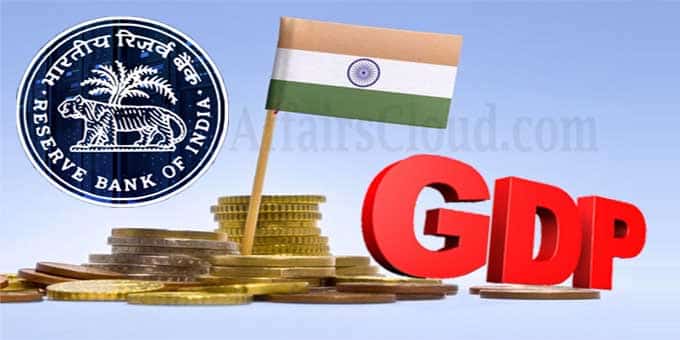On February 25, 2020, Reserve Bank of India (RBI) has came up with a new method of calculating India’s growth through a Working Paper titled “Nowcasting Indian GDP growth using a Dynamic Factor Model” under the RBI Working Paper Series, introduced in March 2011.The Paper is co-authored by Soumya Bhadury, Saurabh Ghosh and Pankaj Kumar. The paper introduces the Dynamic Factor Model of calculating Gross Domestic Product (GDP), using 12 indicators. How 12 indicators represent key sectors?
How 12 indicators represent key sectors?
i.Industry and construction block is represented through Index of industrial production (IIP)-core industries.
ii.Personal income and consumption block is represented by indicators such as IIP-consumer goods and auto sales.
iii.External sector block is represented through Exports, non-oil and non-gold imports and foreign tourist arrivals.
iv.Rail freight, air cargo and government revenue receipts represent services and miscellaneous economic activity, respectively.
Here are the 12 indicators:
- Index of industrial production (IIP) –consumer goods
- IIP- core sectors
- Automobile sales
- Non-oil non-gold imports
- Exports
- Rail freight
- Air cargo
- Foreign tourist inflows
- Government tax receipts
- Nominal Effective Exchange Rate (NEER)
- Sensex
- Bank Credit
It should be noted that the above indicators are similar but not the same as the dynamic factor models (DFMs) of Stock and Watson (1989).
Need of New Indicators:
India’s GDP grew at 5% in the first quarter of FY20, the slowest pace in six years. Also, Nominal GDP growth, a measure of GDP without adjusting for inflation, rose just 8%, the lowest in the last 7 years, indicating a deep slowdown. So, in order to tackle this situation and to get more wholesome picture of the state of the economy, such indicators are required.
About Reserve Bank of India (RBI):
Headquarters– Mumbai, Maharashtra
Formation– 1 April 1935
Governor– Shaktikanta Das
Deputy Governors– 4 (BP Kanungo, N S Vishwanathan, Mahesh Kumar Jain, Michael Debabrata Patra)





